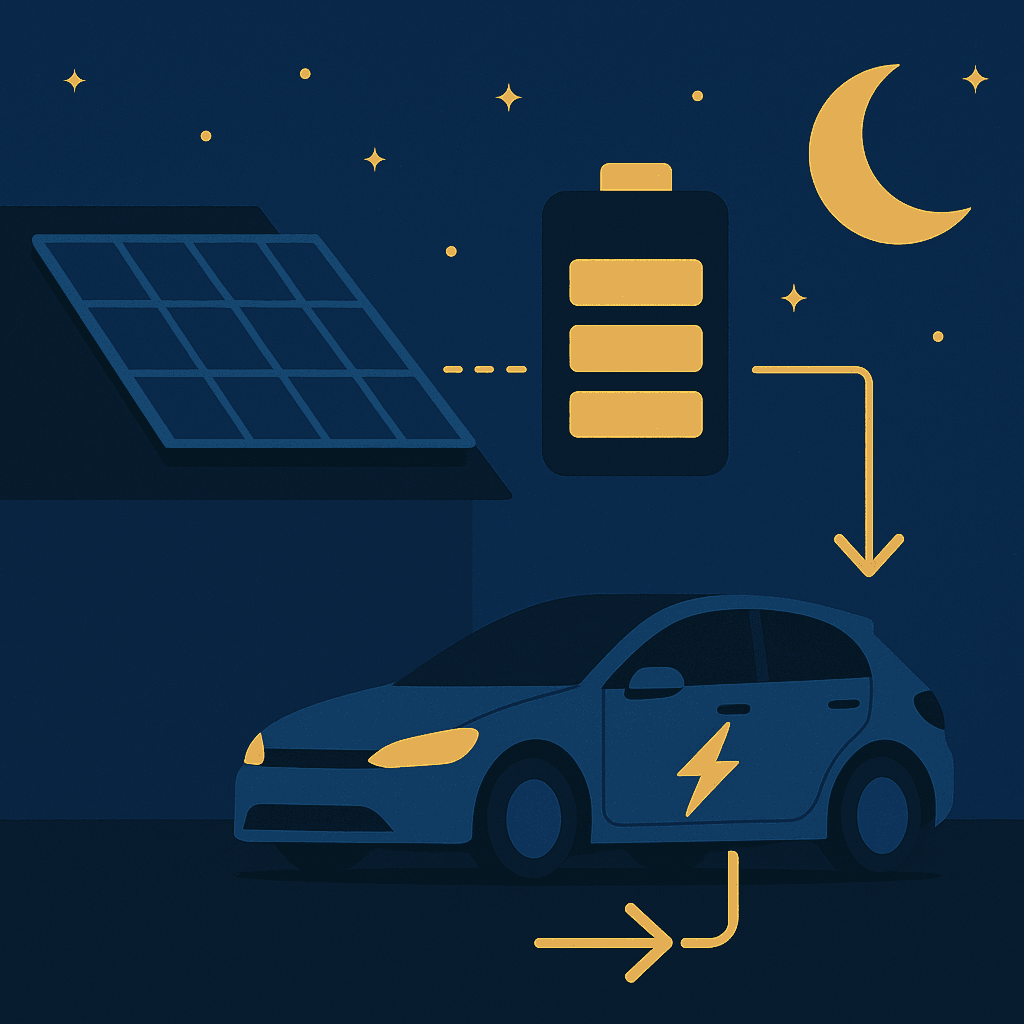Solar panels generate clean, abundant energy by day, but once the sun dips below the horizon, what happens to your overnight EV charging plans? In this post, we’ll unpack the limitations of relying solely on solar for night-time charging and walk you through the workarounds—from battery storage to tariff strategies and hybrid setups.
1. Why Solar Alone Falls Short After Dark
- No Generation at Night: Solar PV panels stop producing when there’s no sunlight, so you can’t directly charge your EV once dusk arrives.
- Grid Dependency: Without on-site storage or special tariffs, you’ll automatically draw from the grid—potentially at peak rates.
- Lost Export Opportunity: Any excess solar generation in the afternoon could be feeding back to the grid when you’d rather bank it for your evening drive.
Battery Storage: Your Overnight Power Bank
A battery system lets you store surplus solar energy during the day and deploy it after sunset:
- Lithium-ion Batteries: The most common choice—typically 5 kWh to 20 kWh capacity—enough for several evening charging sessions depending on your EV’s efficiency.
- Depth of Discharge (DoD): Look for batteries with high DoD (80%+), so you actually use most of the stored energy rather than leave it idle.
- Round-Trip Efficiency: Modern systems achieve 85–95% efficiency, meaning minimal losses between charge and discharge.
Tip: Optimise your battery schedule so it’s fully charged by late afternoon, ready to feed your EV when you plug in at home.
Time-of-Use (ToU) Tariffs and Virtual Storage
If installing a battery isn’t on the cards, consider tariff strategies that mimic storage benefits:
- Off-Peak Charging Rates: Many retailers offer off-peak EV charging discounts overnight (e.g. 10 c/kWh vs. 30 c/kWh peak).
- Solar Export Credits: Some providers let you “bank” exported solar credits during the day to offset your overnight grid use.
- Virtual Net Metering: In shared-solar setups (e.g. apartment complexes), you can allocate solar generation credits directly to your EV charger.
Tip: Check if your retailer offers an EV-specific plan—these often bundle generous off-peak windows with solar export offsets.
Hybrid Systems: The Best of Both Worlds
For ultimate flexibility, a hybrid inverter ties together panels, batteries and the grid:
- Integrated Control: Automatically prioritises solar → battery → EV charging → grid, depending on generation and storage levels.
- Backup Power: In case of a blackout, some hybrid setups can keep essential circuits live, including your EV charger if sized correctly.
- Scalable Design: Start with panels + inverter, then add batteries later as budget or needs evolve.
Tip: When shopping, look for an inverter with dedicated EV-charging support or smart-charging features to optimise energy flow.
Practical Steps to Get Started
- Energy Audit: Calculate your daily solar yield vs. EV charging needs. A 6 kW rooftop system might generate 24 kWh/day—enough for 100 km of range.
- Choose Your Path:
- Battery Storage: For self-sufficiency overnight.
- Tariff Optimisation: If batteries are too pricey.
- Hybrid Inverter: For seamless management and future-proofing.
- Install Smart Charger: Ensure it can be scheduled or controlled via app/EV-platform so it charges only when your stored or cheap power is available.
- Monitor & Adjust: Use an energy-monitoring app to track flows and tweak schedules—maximise solar self-consumption instead of sending it back to the grid.
Final Thoughts
Charging your EV at night with solar energy isn’t magic—it’s about planning and system design. Whether you opt for a home battery, a savvy tariff plan, or a fully hybrid setup, the goal is clear: capture as much solar generation as possible and use it when you need it, not when the sun is shining.
A well-designed solution can slash your electricity bills, reduce grid reliance and keep your EV truly green—day or night.
Ready to power your EV with sunshine round the clock? Let’s explore the right setup for your home.

